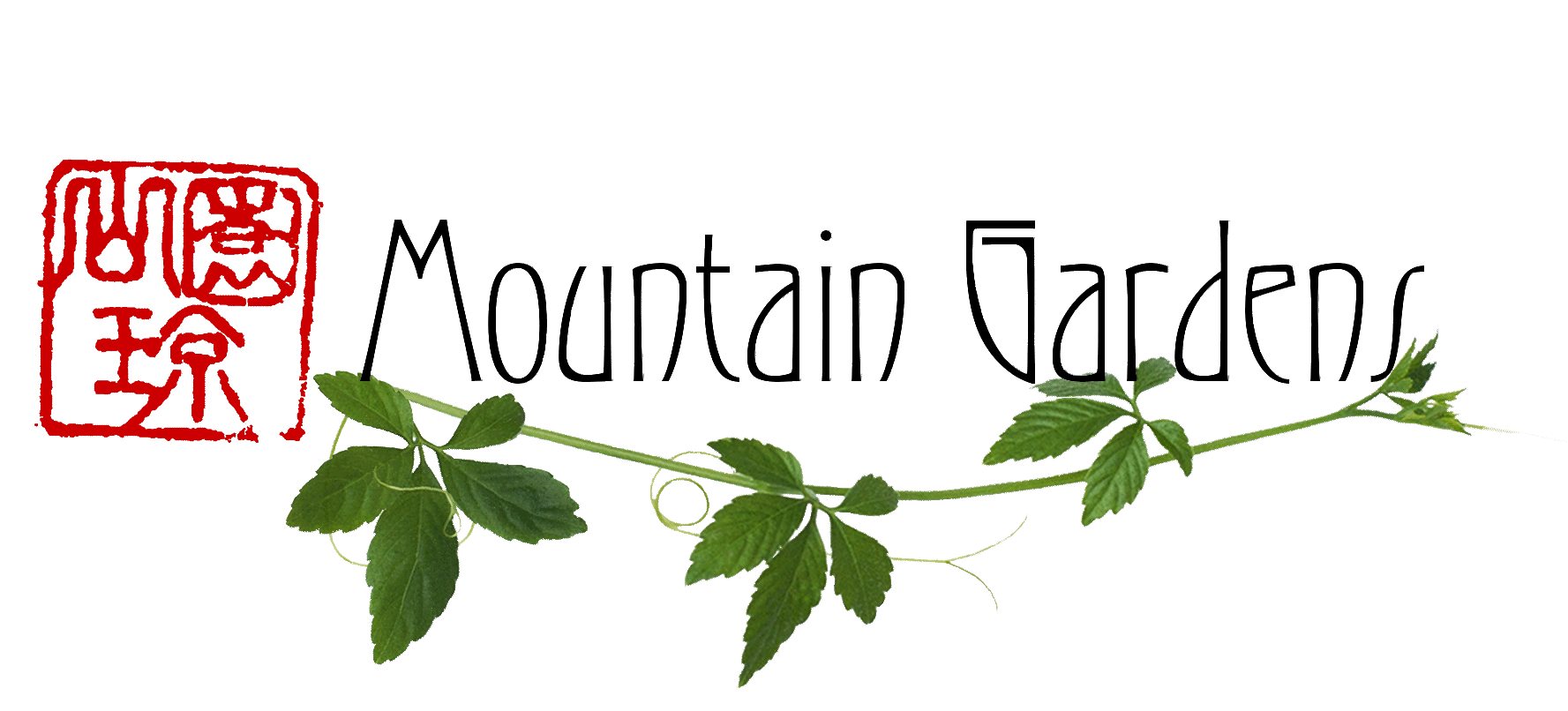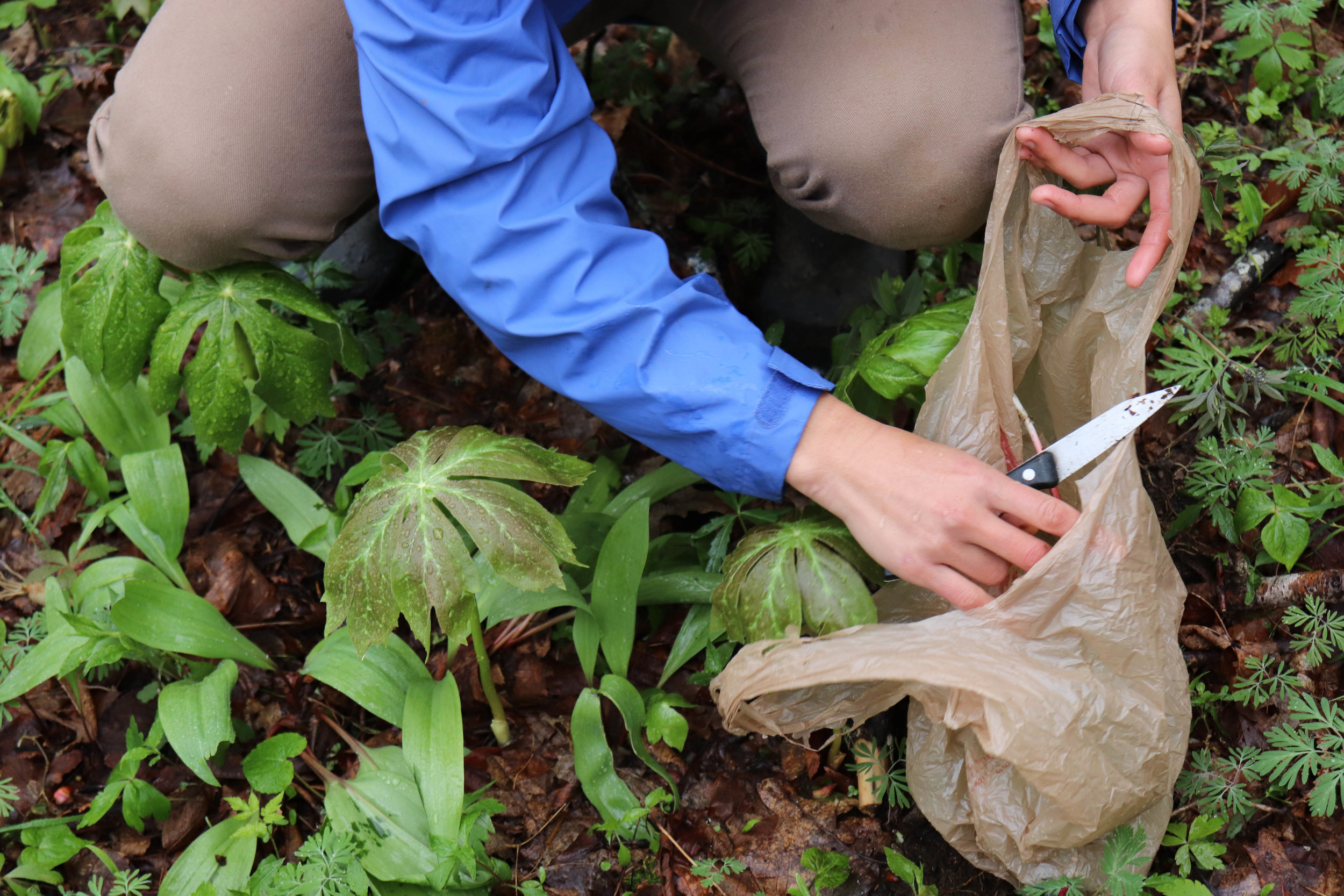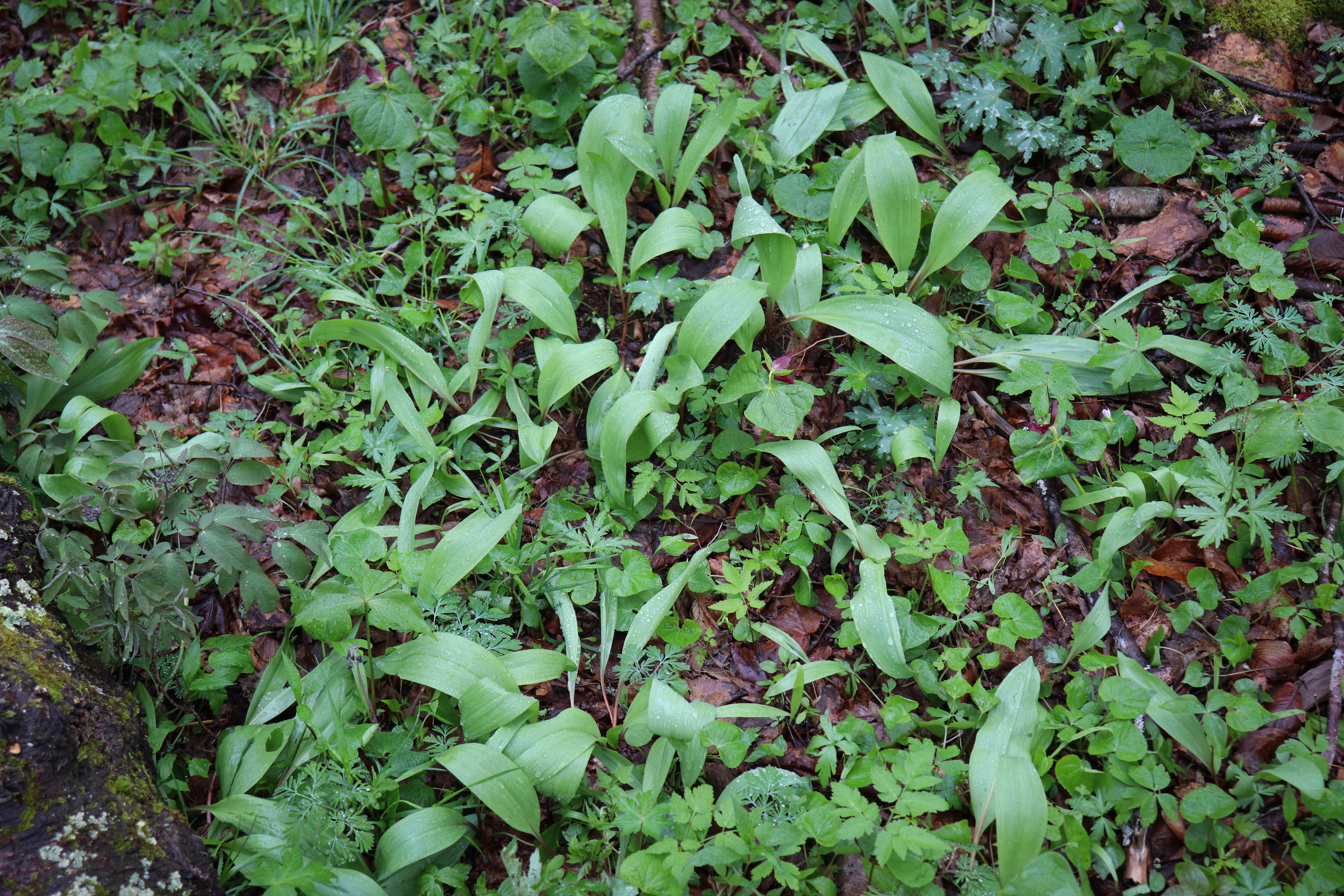The End of Ramps
Cleaning ramps after harvest
Here at Mountain Gardens, temperatures are rising and the trees have leafed out, marking the end of ramp season.
In Western North Carolina, ramp season means driving past wilting ramps in open tailgates along the highway. The local market road sign proclaims RAMPS: they lie in a box, covered in dirt, leaves bruised and wilting, roots attached. Damaged leaves are of no consequence when you count on people discarding them. On our hikes, we meet men with mattocks and backpacks, rampers.
Gathering ramps is nothing new on this continent: long before Europeans arrived on these shores, native people considered it a spring tonic. When harvesting, they were and continue to be careful not to hurt populations, by collecting only from healthy ramp patches, and by leaving the roots in the soil, where they can regrow.
This is the ramp harvesting ethos we strive for when we go out collecting ramps each year for The Lantern, a restaurant in Chapel Hill. Rather than treat them as annuals—bulbs to be harvested once only—we view ramps as a delicate perennial growing among sensitive spring ephemerals. To harvest, we use knives, which we slide into the soil at an angle. We cut the bulb just above the roots, and leave those in the ground. We take with us the rest of the plant, leaves and all.
Luisa harvesting ramps with a knife.
Ramps growing among mayapples, squirrel corn, and trilliums.
Food for thought: It takes a ramp plant seven years to reach sexual maturity and produce seed. For this reason, Joe cautions that even if a ramp patch looks healthy when all the plants are leafed out in early spring, it may in fact be in danger... There have been many years where we've gone out to collect seed and found almost nothing.
We urge everyone wanting to enjoy ramps next season to make sure their ramps have been harvested sustainably. Leaving the roots in the ground is perhaps the only way to ensure that there will be ramps for future generations to enjoy in springtime.




